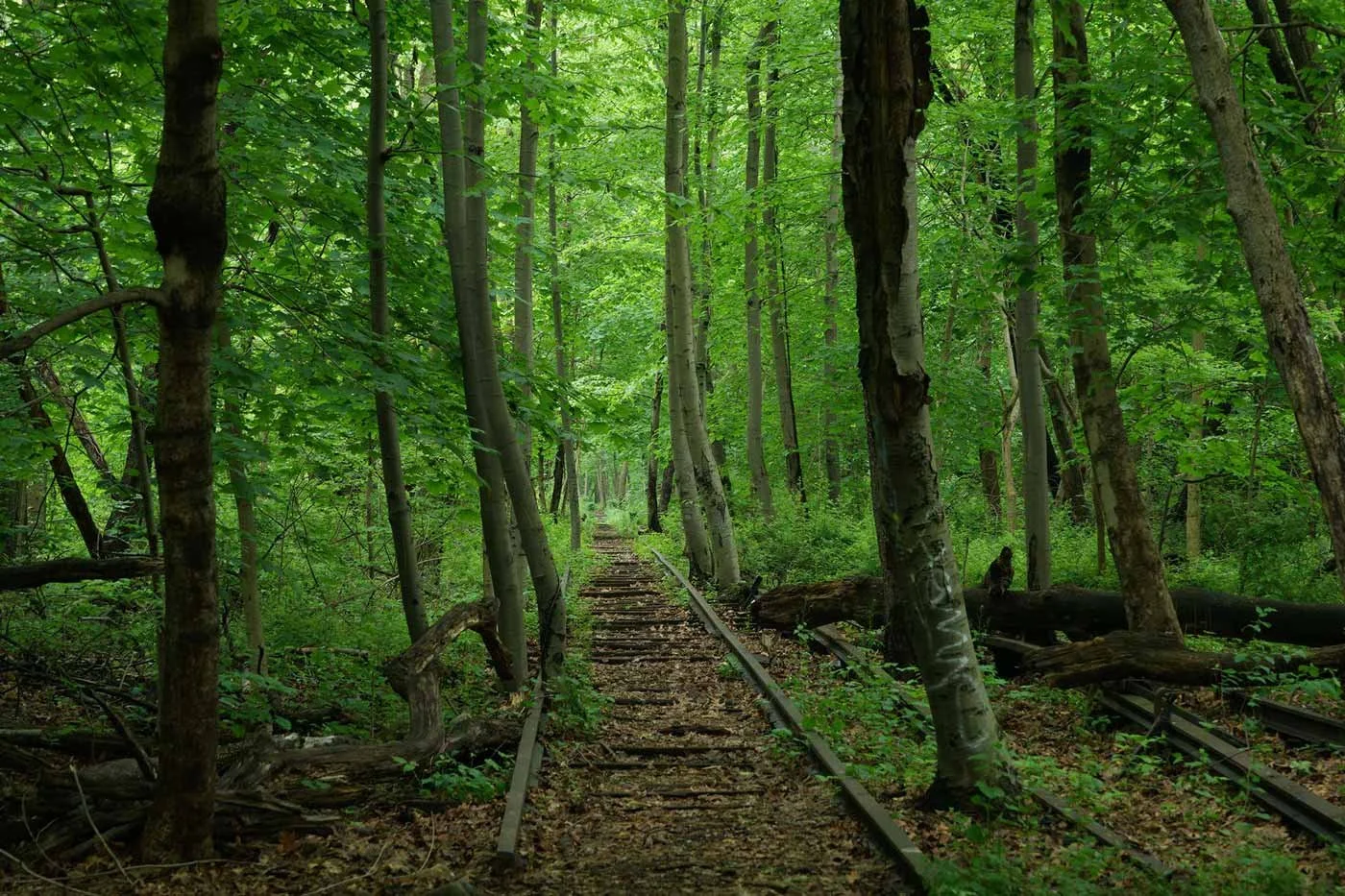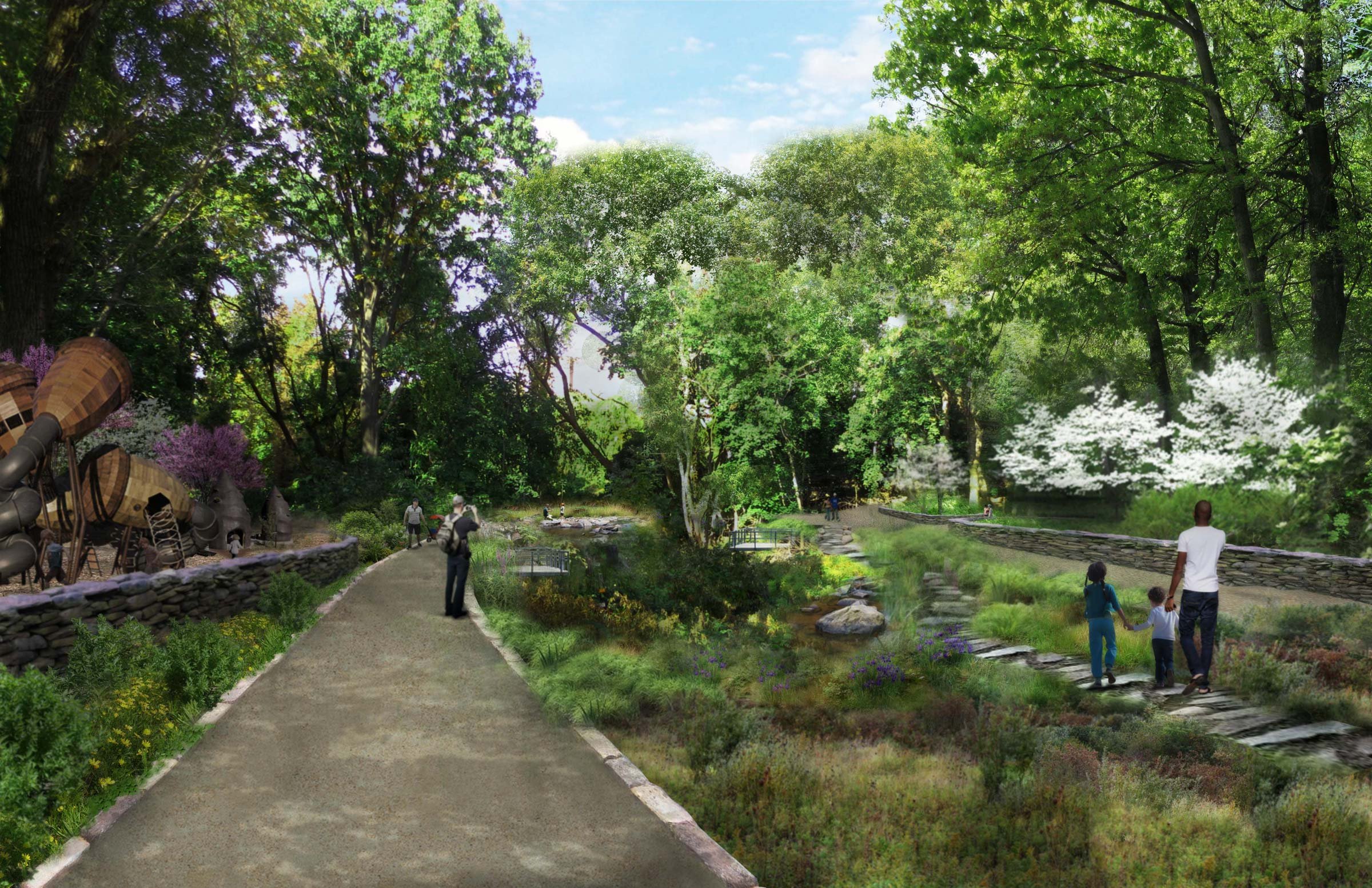Mayor picks QueensWay over new subway for abandoned rail line in Queens – for now
/An abandoned rail line that begins in Central Queens and heads toward South Queens will be turned into a linear park after decades of neglect, Mayor Eric Adams announced on Friday, Sept. 16, 2022. Photo by Richard Drake/QueensWay
By Jacob Kaye
Should a rotting rail line snaking through Central and South Queens be resurrected as a park or a new subway line? Queens has its answer – for now.
After years of advocacy from two, somewhat competing groups, a long-ignored, 3.5 mile stretch of abandoned rail that cuts through Central and South Queens will be turned into a linear park, Mayor Eric Adams announced Friday afternoon.
The city will send $35 million in funding to design and build the linear park, dubbed the QueensWay, which will be built along the out-of-commission Rockaway Beach Branch line not used in over 60 years.
The abandoned area that begins in Central Queens before cutting through Forest Park and traveling south toward the Rockaway Peninsula has been the apple of the eye of two advocacy groups for decades, one of them being Friends of the QueensWay, which has pushed for the linear park. The other group has advocated for a plan dubbed the QueensLink, which would see the area converted back to its original use – a subway line that runs through a number of neighborhoods currently without speedy public transit options.
Adams on Friday didn’t rule out the possibility the QueensLink could be built in the future, but drew a line in the sand about what the top priority for the abandoned city property currently is.
“We've learned during COVID-19 how important it is to have good quality open space,” Adams said. “This park is going to be the center of the lives of this area, in this community, so they can enjoy the open space that we have here.”
“QueensWay improves quality of life, improves the air quality and it promotes both physical and mental wellbeing, and it gives more visibility to businesses along the route,” the mayor added.
The mayor’s announcement on Friday centered around the $35 million in funding – $2.5 million of which comes from the City Council – for phase one of the project, which will include design and construction of the park and greenway.
The QueensWay, similar to the Highline in Manhattan, will be a five-acre park with around three-quarters of a mile of greenway space.
It will be built along the Rockaway Beach Branch line, which originally extended from Rego Park to the Rockaways, but was shut down in 1962 following a series of track fires. The southern portion of the line was revitalized and eventually became the tracks where the A train now runs through Jamaica Bay and into the Rockaways. However, the portion that snakes from Rego Park through Forest Hills, Glendale, Woodhaven, Richmond Hill and South Ozone Park has remained abandoned.
There are around 320,000 people living within a mile of the proposed park, which would also connect with 10 bus lines and four subway stations – although much of the areas connecting with the park are transit deserts.
City Councilmember Lynn Schulman, who represents the northernmost portion of the QueensWay, has been advocating for the project for a decade, dating back to her time on the local community board.
“I can't believe that we're here today,” Schulman said. “It was 10 years ago that two friends and constituents…brought me their dream of creating a linear park where our kids could play, seniors could exercise and get fresh air and bicyclists could have safe bike paths.”
“The QueensWay will now become a reality,” she added.
An abandoned rail line in Central and South Queens will be converted into a linear park, Mayor Eric Adams announced on Friday, Sept. 16, 2022. Rendering via QueensWay
The plan for the QueensWay began in 2011 when a group of Queens residents created the group Friends of the QueensWay and started advocating for the former Long Island Rail Road line to be converted into a public park. Over the years, the project has garnered support from community groups, electeds and candidates for office, but until recently hadn’t gained much steam.
Kathryn Garcia, who finished second behind Adams in the race for mayor last year, announced her support for the project while on the campaign trail – also supporting the project is the Trust for Public Land, a nonprofit that had over $133 million in funds in 2020.
Making the announcement from Trotting Course Lane and 73rd Avenue – an area that is about a 30 minute walk from the nearest subway stop – the mayor failed to mention the second proposed plan for the rail that has been floating around for equally as long as the idea for the QueensWay.
Boosters of the QueenLink, a proposed train line that would run on the 3.5 mile stretch of abandoned tracks, were furious with Adams’ announcement Friday. They said the mayor had completely iced their plan out of consideration and had failed to consult with them before announcing his support for the QueensWay.
“Before you can make any good decision, you need to hear all sides of the story,” said Rick Horan, the executive director of the QueensLink. “And even then, even if the mayor heard all sides of the story, it's still in my opinion that it shouldn't be his decision but should be the decision of the people of Queens.”
“Once all the information is in and analyzed and debated, then you can make a decision, but that's not currently how this regime operates,” he added.
Momentum had recently begun to build for the QueensLink. The plan would see the extension of the M train line onto the abandoned rail – Governor Kathy Hochul announced her intention to build a similar new rail in Western Queens and Brooklyn, dubbed the Interborough Express, earlier this year.
Last month, over a dozen elected officials from Queens – three of whom were at the announcement Friday – signed onto a letter sent to Governor Kathy Hochul requesting the state conduct an environmental impact study on the QueensLink proposal.
Only two elected officials at Friday’s announcement – Queens Borough President Donovan Richards and State Senator Leroy Comrie – made any mention of the transit option and transit issues faced by residents bordering the empty tract of land.
“All over our borough, communities experience many glaring inequities in both park access and transportation opportunities,” Richards said. “We know that much of Queens remains a transit desert, as well, with no subway access and limited and often poor bus service.”
“Let me just point out that this is not an either or scenario,” he added. “Here, we need to do both when it comes to making sure that we can enhance public transportation and also ensuring that communities have access to open space, and we should ensure that those competing interests are met together.”
Dating back to his days as a councilmember, Richards has met several times with both the QueensWay and QueensLinks groups. He’s previously asked that the two groups figure out a way to combine the plans, according to Horan, who added that the QueensLink proposal includes plans for a linear park along the subway line.
An opposing plan for an abandoned rail line in Central and South Queens called the QueensLink, would see the M train extended through South Queens toward the Rockaway Peninsula. Map via QueensLink
Horan said his group has been in communication with the Adams administration for several months, attempting to secure a meeting with leadership in the mayor’s office to pitch the project. No meeting was ever scheduled.
“[The QueensLink] is a huge game changer that, unfortunately, if the mayor has his way, doesn't look like it's ever going to happen,” Horan said.
“When you have an existing right-of-way in the middle of a transit desert and you ignore it, you really have to question how serious people are about delivering the equity they talk about,” Horan added.
Despite the mayor’s announcement, Horan said he believes there is still hope for the rail line expected to serve over 50,000 straphangers.
“This fight is not over,” he said. “This is going to be a wake up call to people. Whether they directly use transit or not, transit helps improve the quality of life and the economic wellbeing of the entire borough.”
Correction: An earlier version of this story misspelled the name of Rick Horan, the executive director of the QueensLink.






